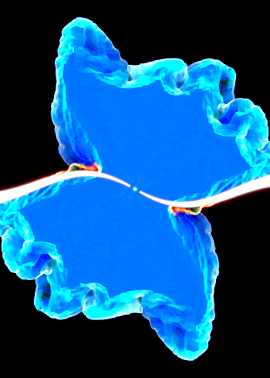Star-gazing gets better timestamp with new technique
 Australian scientists have helped improve our ability to look back into the history of the galaxy.
Australian scientists have helped improve our ability to look back into the history of the galaxy.
Reconstructing the past has become easier, thanks to a more precise method for judging the age of stars and interpreting evidence of our galaxy’s big events.
Astronomical researchers at the Australian National University have led an international team to new ways of interpreting the light and sound waves from stars.
The technique will reveal new insights into ancient stars, and the formation and evolution of the Milky Way.
“We might also uncover evidence for violent events in the past, such as collisions with other galaxies,” ANU’s Dr Luca Casagrande said.
Exactly how a giant prehistoric gas cloud condensed to form the stars and planets of our Galaxy, and how it got its familiar spiral shape, are among the questions the team will tackle.
By combining information from both the light and sound of stars, researchers have created a celestial version of carbon-dating techniques used on Earth.
Dr Casagrande first came up with the idea when he was working in Germany in 2011, and sharing a flat with another astronomer from a different field.
“I was working on the Stroemgren technique which uses the colour of stars to work out stellar properties, while my friend, Dr Victor Silva Aguirre, was working on data from the Kepler Satellite which measures the pulsations of stars; effectively their sound,” said Dr Casagrande.
“We realised that combining the two measurement types would give much more precise stellar parameters, including the possibility of deriving good ages for stars.”
Their initial set of data for 1,000 stars has been published in the pre-print of the latest Astrophysical Journal.
“This is the first paper of a series; the catalogue paper,” says Dr Casagrande.
“Now we are working on the analysis, to release in the next few months, which will study how the age and chemical composition of the stars change in a 5,000 light-year long strip across the Milky Way.”







 Print
Print